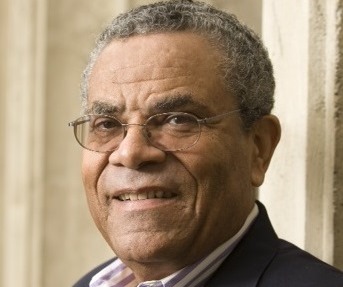 Steve Rhodes via Flickr
Steve Rhodes via Flickr Steve Rhodes via Flickr
Steve Rhodes via FlickrEdSource asked several education leaders to comment on what they think Gov. Jerry Brown’s most important contributions to education reforms in California have been, what major education issues remain unaddressed and what they are hoping for from incoming Gov. Gavin Newsom. Click on their responses below to read more.

John Affeldt
Managing attorney, Public Advocates
Gov. Jerry Brown’s most important contribution to education reform in California:
The passage of the Local Control Funding Formula is Governor Brown’s crowning legislative achievement. We shouldn’t forget, though, that it happened only on the second try — after progressive forces compromised with Brown to craft Prop 30 and community groups propelled turn out to help pass it. Thanks to these efforts California now has one of the nation’s most progressive school funding formulas and a new focus on both equity and community engagement in local decision-making
The major unfinished or unaddressed education issue in California:
As the recent Getting Down To Facts studies demonstrated, school funding remains woefully inadequate, falling short by some $25 billion a year. California has among the fewest adults in its schools in the U.S. and provides indecently low levels of instructional, emotional and health support. Until we achieve adequacy, districts will continue to cannibalize their supplemental and concentration funds to use on the base program instead of truly increasing and improving services for high-needs students.
What Gavin Newsom’s top education priority should be:
Addressing the decades of systemic underinvestment that have led to stubborn opportunity and outcome gaps between low-income students of color and English learners and their more affluent white and Asian peers at every level, from early education through college. If the world’s fifth largest economy hopes to ensure a prosperous future, the question is not if, but how, the state will raise new revenues to invest systemwide.

Carl Cohn
Founding Executive Director, California Collaborative for Educational Excellence; Former member, State Board of Education
Gov. Brown’s most important contribution to education in California:
Successfully providing major new resources for historically underserved students without a protracted legal battle and reminding everyone that, if those same students are going to be rescued, it will be done by those closest to them at the local level, not by state capitals or the federal government.
The major unfinished or unaddressed education issue in California:
Whether or not county offices of education, critical players in the statewide system of support, can shed their historical compliance-driven approach and emerge as talent centers that districts will see as their first choice for help and support. I had breakfast just this morning with a local district superintendent, who said that his county office is literally having them check boxes on a bureaucratic form as the key feature of differentiated assistance.
What Gavin Newsom’s top education priority should be:
Broker a major peace agreement between the charter and the traditional public school communities. The gubernatorial primary and the superintendent of instruction general election were both polarizing and divisive with regard to the language used to describe the other side. For all those who truly care about kids, a new tone will have to be set “to bind up the wounds,” and to foster common ground approaches to better serve all kids and parents in search of a better education in our state.

Bill Honig
Former state superintendent of public instruction
Gov. Jerry Brown’s most important contribution to education reform in California
He substantially increased funding for California’s public schools, without which other improvements would have been difficult. He appointed top-flight educators to the State Board of Education and California Commission on Teacher Credentialing and supported their policies to implement standards and the curricular frameworks based on them, a broader accountability system, professional development and capacity building, richer preparation of new teachers, Career Technical Education and local control through Local Control and Accountability Plans.
The major unfinished or unaddressed education issue in California:
Closing the gap in school funding with other industrial states, solving the pension issues, revitalization of civic education and engagement, deeper implementation of the Common Core standards, continuous improvement and capacity building and ensuring that every graduate is either prepared for a four-year college or a rigorous alternative tech/prep pathway for students not going to a four-year college.
What Gavin Newsom’s top education priority should be:
All in #2 plus pre-school expansion.

Jonathan Kaplan
Senior Policy Analyst, California Budget and Policy Center
Gov. Jerry Brown’s most important contribution to education reform in California
The Local Control Funding Formula (LCFF) was a major step toward making California school funding more equitable. It fundamentally changed how the state allocates resources, enabling school districts to begin to confront the challenges faced by English learners, foster youth and students from low-income families. Because of Governor Brown’s advocacy for LCFF’s concentration grants, districts with large shares of disadvantaged students have received significantly more dollars to address these students’ needs
The major unfinished or unaddressed education issue in California after Brown’s governorship:
Part of the LCFF’s promise was to ensure that dollars intended for disadvantaged students are used to provide additional services for these students. The major unfinished business is defining the state’s role in ensuring that this promise is kept.
What Gavin Newsom’s top education priority should be:
Because English learners comprise more than 1 out of every 5 California students, they should be Governor Newsom’s top education priority. And given that large shares of English learners come from low-income families, Governor Newsom should prioritize policies that address child poverty as a means to improve educational outcomes for all disadvantaged students, including English learners.

David Plank
Professor (Research), Stanford University; Former Executive Director, Policy Analysis for California Education
Gov. Jerry Brown’s most important contribution to education reform in California
Brown’s most important accomplishments in education policy were to win approval of the Local Control Funding Formula, which eliminated most categorical funding programs and introduced a more rational and equitable system for funding schools, and to protect the integrity of the new system for the remainder of his term. Holding the line against the reintroduction of categorical funding programs will be a major challenge for Gavin Newsom.
The major unfinished or unaddressed education issue in California after Brown’s governorship:
The challenges involved in making the state’s early childhood/pre-K education systems more rational, equitable and effective are far more complex and politically fraught than reforming K-12 school finance and Brown chose to leave them for Gavin Newsom to sort out. The decision to leave special education outside of the Local Control Funding Formula will also create headaches for Newsom and his successors.
What Gavin Newsom’s top education priority should be:
Newsom’s first priority should be to create a comprehensive educational data system that links student-level data from pre-K through post-secondary. This is a low-cost, high-impact reform that can help to establish a solid foundation for enhanced accountability and improved performance at all levels of the state’s fragmented education system.

John Rogers
Director, UCLA’s Institute for Democracy, Education and Access (IDEA)
Gov. Jerry Brown’s most important contribution to education reform in California:
When Jerry Brown first served as governor in the 1970s, voter dissatisfaction with court-ordered busing and finance equalization combined with a tax revolt to produce Proposition 13, prompting California’s fall over the next three decades to near the bottom of all states in education funding. Since returning to the governor’s office in 2011, Brown has overseen an unprecedented expansion in K-12 funding that has used equity as its core distributional principle. I call that redemption.
The major unfinished or unaddressed education issue in California after Brown’s governorship:
During a period of dramatic growth in charter school enrollment in California, Jerry Brown avoided most calls to reconsider the criteria and processes through which the state authorizes charter schools. The result has been more instability in the traditional public school sector and more ill will and political infighting between charter school proponents and their foes. The task of revising the 1992 charter law has been made more difficult by kicking the can down the road.
What Gavin Newsom’s top education priority should be:
I believe Governor Newsom already has chosen early childhood education as his emphasis and that is a worthy focus. If I could encourage another priority it would be to use every legal power at his disposal to provide protection and support for immigrant youth and the children of immigrants attending California’s K-12 schools, colleges and universities.

Marshall Smith
Former undersecretary of education; former dean of Stanford University Graduate School of Education
Gov. Jerry Brown’s most important contribution to education reform in California:
Brown combined steady support for the implementation of the Common Core standards with the Smarter Balanced aligned assessment with — to make this work — his leadership in achieving the passage of the Local Control Funding Formula. This increased finances for all schools, especially for schools with students predominantly from low-income families.
The major unfinished or unaddressed education issue in California after Brown’s governorship(s):
A major unaddressed issue in education is the combination of state debt from mis-management of retirement income benefits and the health benefit debt of some local districts such as LA due to bad decisions by local boards. Billions!
What Governor Newsom’s top education priority should be?
CA needs more counselors and psychologists to work with students that have experienced multiple incidents of toxic stress.
The number of vulnerable children has been dramatically increasing. Children on the street, foster children, children living in areas where there are gunshots at night, children with a parent in prison, children who are beaten regularly or see one parent beat another, children who live with the reality that they could wake up in the morning and find that one of their parents has been deported. CA has among lowest ratios of counselors and psychologists per student in the country. One in five students in CA has contemplated suicide. Go here for evidence about the effects of toxic stress.

Ryan J. Smith
Chief external officer, Partnership for Los Angeles Schools
Gov. Jerry Brown’s most important contribution to education reform in California:
Governor’s Brown’s passage of the Local Control Funding Formula (LCFF) and his support for making willful defiance suspensions illegal for students in grades K–3 were significant symbolic wins for low-income communities and students of color. Although we’ve seen major challenges in LCFF’s execution, the fully funded formula was a tectonic shift in fiscal policy and shifted the education equity discussion from talk to action. Brown’s famous words that “equal treatment for children in unequal situations is not justice” brought needed attention to California’s students who have been historically overlooked by our state’s education system. Even though he recently vetoed the law that would have expanded the suspension to kindergarten through high school, Brown’s support of curbing suspensions K–3 will be seen as a win particularly for our state’s Black community, who witnessed young Black children excessively pushed out of schools with no recourse. Even though I believe the Governor could have gone further in the implementation of both policies, I commend his effort to dismantle troubling inequities.
The major unfinished or unaddressed education issue in California:
While states like Indiana and Illinois have made gains in narrowing the achievement gaps over the past 15 years, California’s equity gaps remain and for some groups of students continue to grow. Rather than remediate achievement gaps, Brown’s education policies started a dangerous devolution of the state’s accountability system. The lack of oversight in how districts spent their LCFF dollars led to lawsuits in Los Angeles and Long Beach Unified School Districts. Even with revisions, the state’s tools for accountability and improvement — the Local Control and Accountability Plan (LCAP) and new dashboard — are bulky at best, intentionally confusing at worst. And no school should be considered “good” in California if black, brown and poor students are failing or being pushed out of school.
Also, although we consider California the hub of innovation, the state has an embarrassing record in using educational data to improve practice. For example, the Brown administration stopped a years-in-the-making teacher data system, making it almost impossible to understand the full extent of the state’s teacher shortage. These decisions may ultimately exacerbate our stubborn equity gaps.
What Gavin Newsom’s top education priority should be:
In his essay on the evolution of the race problem, W.E.B DuBois asserts that the “the cost of liberty is less than the price of repression.” It’s time to move past a conversation of mere equity to one rooted in justice for California students. The data show that our current system persistently fails three groups of students in particular: African-American students, English Learners and students with disabilities. Unlike active conversations we see in the criminal justice and health systems, California’s education leaders have been reticent to discuss how remnants of California’s racist, xenophobic, sexist and discriminatory policymaking leave these students behind. Focusing on aligning our data systems, improving teacher preparation programs, investing more in education writ large and targeting even more resources to these student groups can help move the needle for all of California’s students. It’s also time to appoint leadership on the State Board of Education, the UC Regents and elsewhere that reflects California’s growing diversity and has a track record of tackling discriminatory policies.

Ting Sun
Executive Director, Natomas Charter School; Member, State Board of Education
Gov. Jerry Brown’s most important contribution to education reform in California:
At heart, Gov. Brown is a humanist steeped in the liberal arts tradition. To that end, the governor’s greatest contribution to educational reform is local control — an approach that affirms the ability and responsibility of educators and their communities to determine how they can best serve their students. Local control is a clear signal that one size does not fit all, which has been the approach (and failure) of prior reform movements.

William Tierney
Co-Director, Pullias Center for Higher Education at the University of Southern California
Gov. Jerry Brown’s most important contribution to education reform in California:
The governor used his bully pulpit to hector about higher ed reform rather than lobby the legislature for additional monies to alleviate higher education’s chronic problems. And yet, given the array of problems the state faced, and Brown’s fiscal discipline, the systems are better off today than they were eight years ago. His constant drumbeat to exert fiscal administrative prudence, to increase productivity and to hold down costs to students was a message that sunk in and modestly created better systems.
The major unfinished or unaddressed education issue in California:
We have three systems that are free to go their own way without coordination; the result is structural inefficiencies. Transfer rates remain abysmal; transfer should be smooth and robust rather than fraught and sporadic. Time to degree is still atrocious; students take too long to finish or never finish, when on-time completion should be the norm. Systemic relationships with high schools is non-existent; transition to college should be seamless; instead too many students are unprepared.
What Gavin Newsom’s top education priority should be:
The governor has neither the will nor the resources to cover all the costs of college. He can hold real costs steady, which will be a significant savings for students. What he should not do is penalize the systems by not letting them charge tuition that enables them to capture available monies such as Pell grants. What he must do is ensure that students are not paying more tuition out of their pocket.
To get more reports like this one, click here to sign up for EdSource’s no-cost daily email on latest developments in education.













Comments (2)
Comments Policy
We welcome your comments. All comments are moderated for civility, relevance and other considerations. Click here for EdSource's Comments Policy.
RocQuel J 5 years ago5 years ago
I also know there is no accountability for how the monies are used for LCAP. I’m told principals know where money is needed in their schools, but does that mean to the students that the money was initially allocated for? Most of the time the answer is no. Are the outcomes measurable? Who is actually collecting data for this?
RocQuel J 5 years ago5 years ago
Thank you for this timely article; however I wanted to know why there were not more women of color providing their input into this very important conversation.